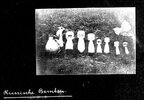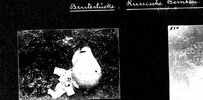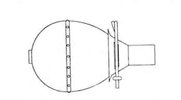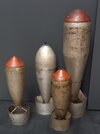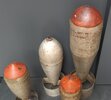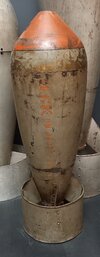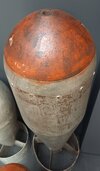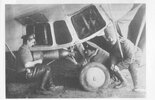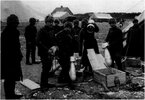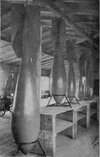I found recently quite a lot of pictorial documentation on the use of aviation bombs by the Lithuanian Air force in the interwar period.
At teh end of the first world war, the situation in what is now Lithuania was quite complex - the Lthuanian were fighting for their independence, the White forces of Bermondt-Avalov were fighting against the Bolsheviks and teh Lithuanians, supported by the German Baltic Landwher forces of von der Goltz. The Bolsehviks were fighting against the Poles who were fighting against the Lithuanians, and the German Freikorps in the near by East Prussia, Latvia and Estonia were fighting against everyone.
The defeat of Bermondt Avalof forces under the attaks of the Bolsheviks and of the Lithuanians enable these last to capture in Kaunas (Kovno) large amount of fighting aircraft and equipment including thousands of bombs (the official number of 10,000 is however suspect), which were soon re-used by the newly born Lithuanian air force in the fighting against the Poles.
The source of the bombs being the Bermondt Avalov corps, they were of mixed origin: German, Russian and Austro Hungarina bombs.
These photographs from 1919 during the fighting with the Poles are remarkable for their quality, but also by their content: they show Oranovsky bombs, 12.5kg PuW bombs and what appear to be Austrian 10kg Treisen-BrandstreuBomben - the presence of these last bombs makes these photographs exceptional as they are probably the only existent photograph of such bombs. This enable to appreciate the real size of these bombs often underestimated on the drawings - their height was 450mm for a max diameter of 250mm , while the 12.5kg Puw hd a height of 750mm for a max diameter of 90mm . The 10 Funt Oranovsky (about 4 kg) had an overall height being 425mm for a diameter of 105mm , the The 25 Funt Oranovsky (about 10kg) having an overall height of 490mm for a max diameter of 140mm.
The fact that these bombs are unpainted is also worth noting.
The following pictures come from the Lithuanian National Archive


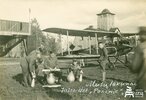

In the mid thirties the Lithuanian began to by large numbers of modern bombs from the Finnish company Tolfvan (the trademark specified in the Lithuanian sources, not the Bofors trademark used by Tolfvan for its exports sales, till the separation of the two companies in 1935).
However these bombs seems to be of the early model, also bought by the Swedes under the denomination Bofors M/26. (Later models had a partly cylindrical body and reinforcing tail fin struts). The parentage of the PuW bombs is still very much felt in the general shape of these bombs.
Beyond a few photographs of the period it appears that a number of these bombs have survived till present days and can be seen in Kaunas in the "Military Technical Exposition" there (though sadly they seem to have been "overhauled" and "reconstructed" for the sake of the display ).

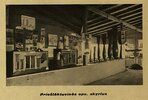
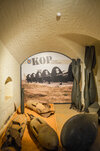
(the cement bomb are of course German WW2 training bombs)
Last but not least, a number pof Italian Frag Spezzone ("Tipo F") of 1kg foudn their way in Lithuania with the acquisition of Fiat Cr20 fighters (they had 2 dropping tubes for 5-6 each such spezzone behind the seat of the Pilot)
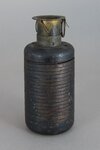
At teh end of the first world war, the situation in what is now Lithuania was quite complex - the Lthuanian were fighting for their independence, the White forces of Bermondt-Avalov were fighting against the Bolsheviks and teh Lithuanians, supported by the German Baltic Landwher forces of von der Goltz. The Bolsehviks were fighting against the Poles who were fighting against the Lithuanians, and the German Freikorps in the near by East Prussia, Latvia and Estonia were fighting against everyone.
The defeat of Bermondt Avalof forces under the attaks of the Bolsheviks and of the Lithuanians enable these last to capture in Kaunas (Kovno) large amount of fighting aircraft and equipment including thousands of bombs (the official number of 10,000 is however suspect), which were soon re-used by the newly born Lithuanian air force in the fighting against the Poles.
The source of the bombs being the Bermondt Avalov corps, they were of mixed origin: German, Russian and Austro Hungarina bombs.
These photographs from 1919 during the fighting with the Poles are remarkable for their quality, but also by their content: they show Oranovsky bombs, 12.5kg PuW bombs and what appear to be Austrian 10kg Treisen-BrandstreuBomben - the presence of these last bombs makes these photographs exceptional as they are probably the only existent photograph of such bombs. This enable to appreciate the real size of these bombs often underestimated on the drawings - their height was 450mm for a max diameter of 250mm , while the 12.5kg Puw hd a height of 750mm for a max diameter of 90mm . The 10 Funt Oranovsky (about 4 kg) had an overall height being 425mm for a diameter of 105mm , the The 25 Funt Oranovsky (about 10kg) having an overall height of 490mm for a max diameter of 140mm.
The fact that these bombs are unpainted is also worth noting.
The following pictures come from the Lithuanian National Archive




In the mid thirties the Lithuanian began to by large numbers of modern bombs from the Finnish company Tolfvan (the trademark specified in the Lithuanian sources, not the Bofors trademark used by Tolfvan for its exports sales, till the separation of the two companies in 1935).
However these bombs seems to be of the early model, also bought by the Swedes under the denomination Bofors M/26. (Later models had a partly cylindrical body and reinforcing tail fin struts). The parentage of the PuW bombs is still very much felt in the general shape of these bombs.
Beyond a few photographs of the period it appears that a number of these bombs have survived till present days and can be seen in Kaunas in the "Military Technical Exposition" there (though sadly they seem to have been "overhauled" and "reconstructed" for the sake of the display ).



(the cement bomb are of course German WW2 training bombs)
Last but not least, a number pof Italian Frag Spezzone ("Tipo F") of 1kg foudn their way in Lithuania with the acquisition of Fiat Cr20 fighters (they had 2 dropping tubes for 5-6 each such spezzone behind the seat of the Pilot)

Last edited:

